Taxis are often seen as mere workhorses, enduring the daily grind of city streets and highway miles. But some of these vehicles defy expectations, proving that with the right maintenance and care, a car can last far beyond what most drivers would consider normal.
In this article, we’ll take a look at 10 legendary taxis that have clocked over 300,000 miles on the odometer. These high-mileage heroes showcase the durability, reliability, and resilience of the cars that have earned their place in the annals of transportation history.
Whether they’ve been powering through bustling metropolises or navigating long-distance routes, these taxis are true testament to the longevity that’s possible when a vehicle is built to last.
1. The Toyota Corolla Estate Hybrid (2019–2025)
The Toyota Corolla Estate Hybrid has quickly become a favorite among taxi drivers, gradually replacing the Prius as the go-to hybrid taxi across the UK.
We reached out to our customer base, and one individual responded, “I’d say 50% of the Ubers I’ve taken in the past few months have been Corolla estates.”
This shift is particularly noticeable in city centres, where the car’s combination of self-charging hybrid technology, spacious boot, and Toyota’s proven reliability makes it an excellent match for the heavy demands of taxi use especially with the average driver covering 46,500 miles each year.
There are numerous reports of Toyota hybrids surpassing 200,000 miles on original components, demonstrating the kind of durability that taxi professionals depend on.
The Corolla Estate offers a number of strengths that appeal specifically to taxi drivers. It ranks 6th in the 2024 What Car? Reliability Survey and is eligible for Toyota’s 10-year/100,000-mile warranty.
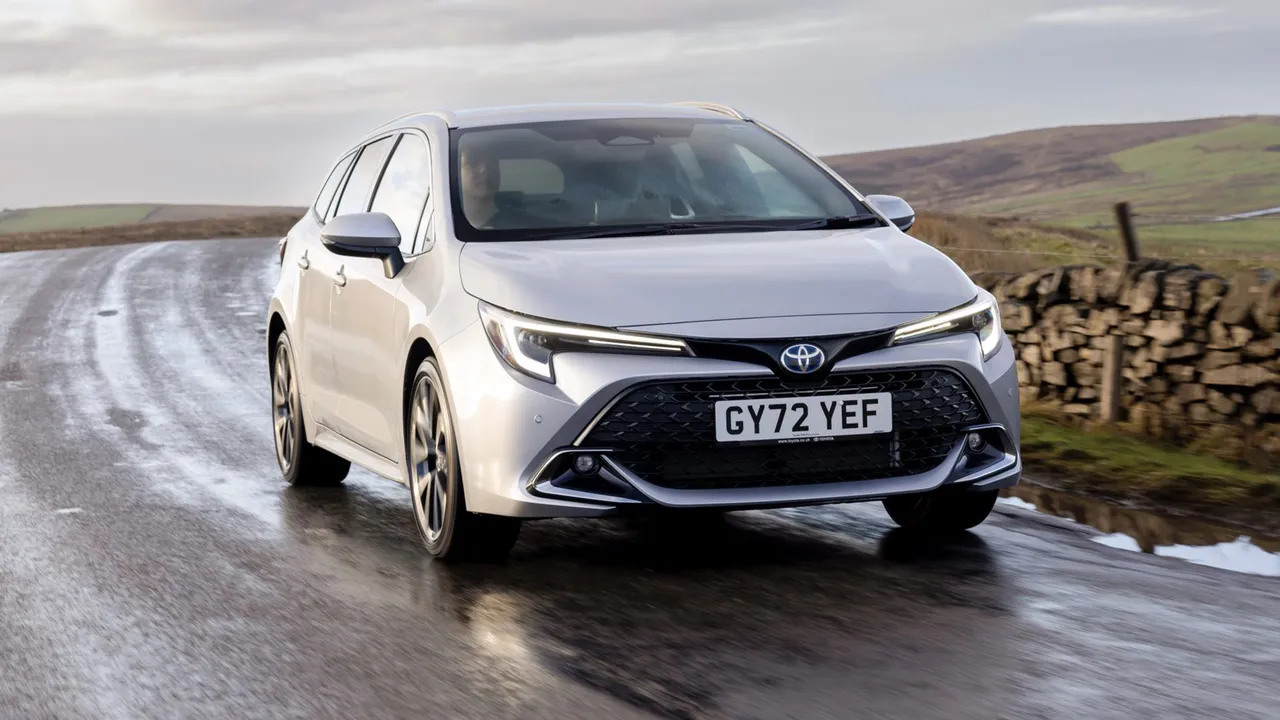
Real-world fuel economy stands at 55–60mpg in city driving conditions, potentially saving over £1,500 annually when compared to standard petrol alternatives.
The 596-litre boot is perfect for carrying multiple suitcases on airport trips, and maintenance costs are reduced thanks to regenerative braking and a hybrid system that reduces engine stress.However, there are a few trade-offs to consider.
The CVT transmission may cause engine drone during hard motorway acceleration, and the vehicle produces more wind and road noise at higher speeds than some premium rivals.It also comes with a slightly higher upfront cost compared to petrol or diesel models.
Additionally, the infotainment system isn’t as user-friendly as some competitors’, and the digital instrument cluster requires more interactions than might be ideal while driving. Deals for this model start from around £300.
2. Skoda Octavia 2.0 TDI (2020–2025)
Another strong contender is the Skoda Octavia 2.0 TDI (2020–2025), which has long held a reputation as a taxi driver favourite throughout Europe.
This fourth-generation model continues that legacy, delivering generous interior space within a sleek and manageable exterior footprint.
Our research found that taxi drivers especially appreciate the 2.0 TDI model for its mix of strong torque and fuel economy ideal qualities for fully loaded airport transfers.
The Octavia stands out with the kind of interior space typically seen in larger executive vehicles while still offering the nimbleness of a standard family car.
Among its strengths, the Octavia boasts an impressive 600-litre boot (640 litres in the Estate version), which puts it ahead of most rivals in terms of cargo space.
The 2.0 TDI 150 engine delivers 55–60mpg in real-world driving even when carrying heavy loads. Rear passengers enjoy excellent legroom, offering a near-limousine level of comfort, and the interior has been built to endure the wear and tear of constant use.
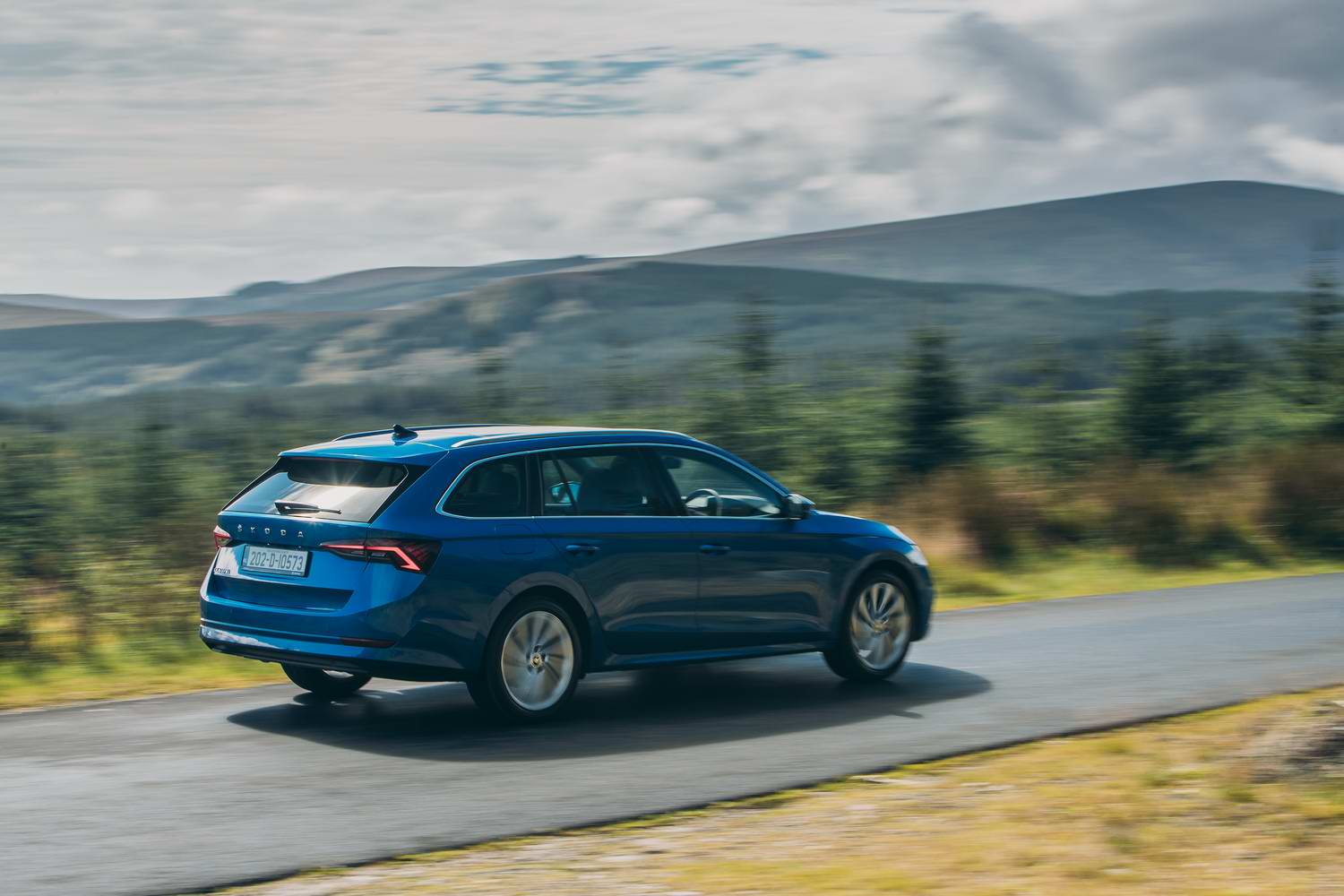
However, drivers should be aware of a few drawbacks. Some high-mileage users have reported issues with the vehicle’s electrical systems.
The infotainment touchscreen can be distracting to use while driving, and the car’s soft suspension may feel floaty when crossing over road crests at speed.
Additionally, the timing belt must be replaced every five years, a job that costs around £449 at Skoda service centres.
The raised boot lip may also make it slightly more difficult to load heavy luggage. Deals for the Octavia 2.0 TDI start from approximately £157.
Also Read: Top 10 Cars With the Most Loyal Long-Term Owners
3. Toyota Prius Hybrid (2016–2022)
The Toyota Prius has become almost synonymous with taxi services over the last decade, earning its place as the benchmark for urban taxi vehicles.
Its instantly recognisable silhouette has made it a familiar sight in cities around the world, and many drivers report that it remains their top choice for city-based operations.
The Prius’s stellar reputation for reliability, paired with its outstanding urban fuel efficiency, makes it an ideal candidate for the stop-start nature of city driving. Our research shows that taxi drivers frequently log over 50,000 miles annually in the Prius with minimal mechanical issues.
There are several standout features that continue to make the Prius attractive to taxi drivers. Unmatched in reliability, there are multiple documented cases of taxi Priuses surpassing 300,000 miles on their original components.
In city driving, where most taxis operate, the Prius offers a class-leading real-world fuel efficiency of 60–65mpg. Thanks to regenerative braking, component life is extended, leading to lower maintenance costs.
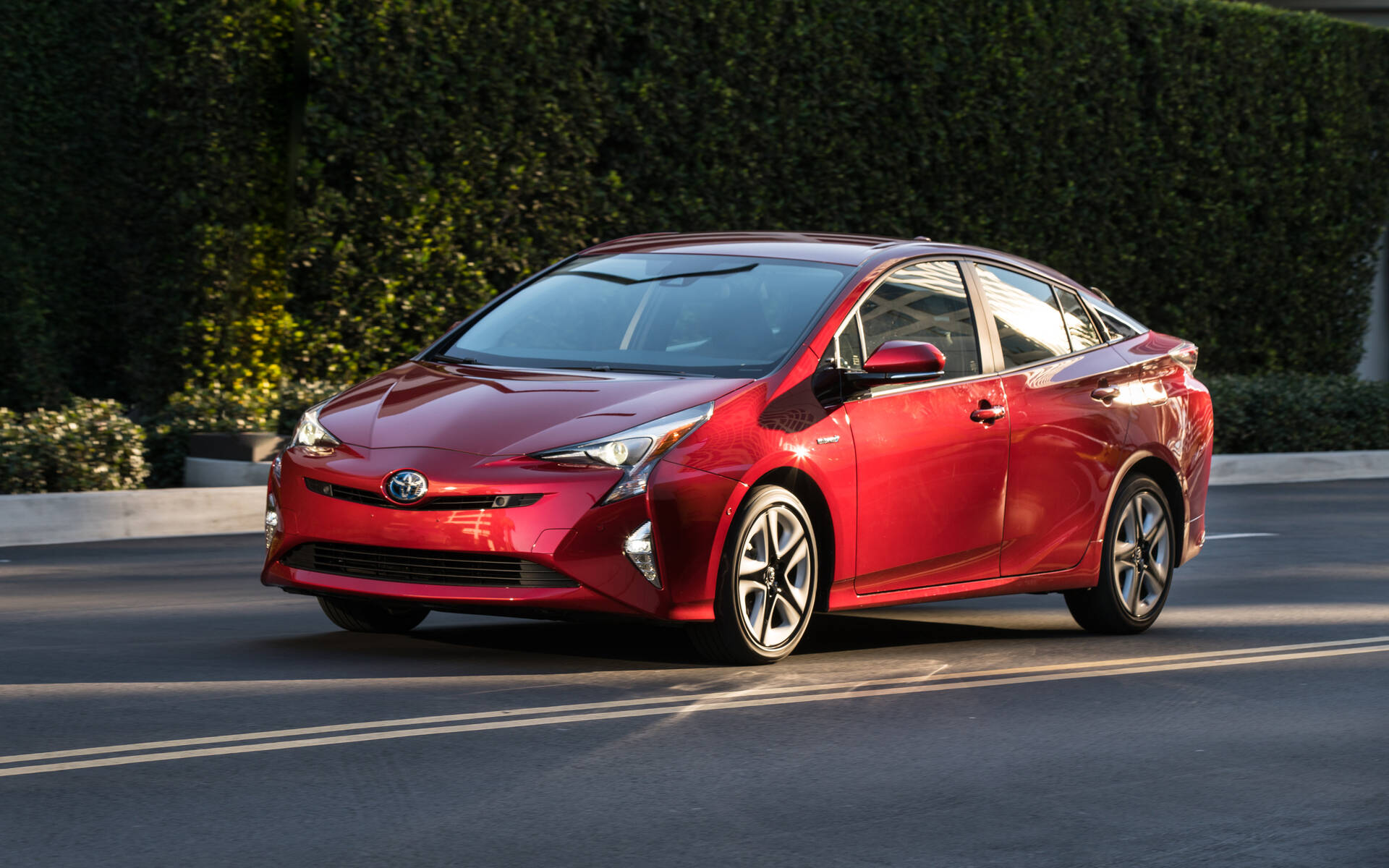
Toyota’s hybrid technology, refined across multiple generations since 1997, remains a proven and trusted system.
However, the Prius does have some limitations to consider. The CVT transmission can produce noticeable engine drone during hard motorway acceleration, and while the boot offers 502 litres of space, it falls short compared to larger estate vehicles.
Motorway efficiency also dips slightly to 50–55mpg, which is lower than its exceptional city performance.
Additionally, the unconventional dashboard layout may take time for some drivers to get used to, and the aerodynamic roofline results in slightly reduced rear headroom. Deals for the Prius Hybrid start from £211.
4. Skoda Superb (2015–2024)
True to its name, the Skoda Superb offers executive-class interior space and comfort at a price point that remains accessible for many taxi operators.
It has become especially popular in the premium taxi segment, where longer-distance airport transfers and executive travel are the norm.
Feedback from our taxi operator surveys indicates the Superb is often preferred in regions where comfort and space are priorities.
The Superb distinguishes itself with features that cater directly to taxi needs. It offers genuinely limousine-level rear legroom, often exceeding that found in luxury vehicles costing significantly more.
Its hatchback boot holds an impressive 625 litres, expandable to 1,760 litres with the seats folded down perfect for transporting large luggage.
The Superb presents a compelling value proposition by delivering a premium experience at affordable running costs. Sound insulation is excellent, providing a refined and quiet motorway experience for passengers.
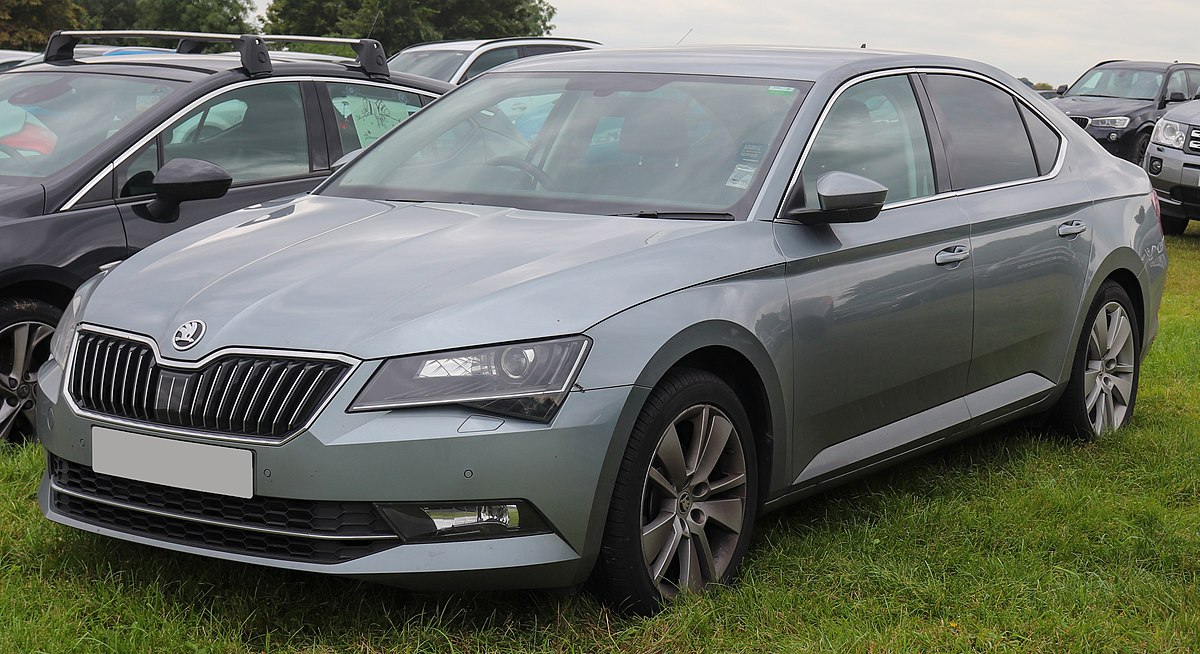
There are also practical features tailored to taxi drivers. Reliability is solid, thanks to the Superb sharing many components with the Volkswagen Passat.
The efficient 2.0 TDI 150 engine returns 50–55mpg in mixed conditions. Passengers benefit from class-leading rear accommodation and a spacious boot, while well-damped suspension helps maintain comfort during long journeys.
The Superb also helps taxi operators present an executive image without the ongoing maintenance expenses associated with premium badges.
Still, prospective buyers should weigh a few considerations. While the Superb offers excellent value, it does come with a higher upfront cost than some other mainstream alternatives.
Intensive use has revealed occasional electrical reliability issues. Cold diesel engines can sound gruff, and the car’s handling is tuned more for comfort than for spirited driving.
Some lower trim models may lack key features, so we recommend the SE Technology variant for the best balance of comfort and equipment. Deals for the Skoda Superb start from £132.
5. MG5 Estate Electric (2020–2025)
The MG5 Estate holds the distinction of being the first truly affordable electric estate car on the market, providing a practical and economical entry point into the world of zero-emission taxi operation.
Its introduction has been welcomed by drivers seeking to future-proof their business without bearing the high cost usually associated with electric vehicles.
The feedback from taxi operators has been overwhelmingly positive, particularly concerning the drastic reduction in operating expenses.
Some drivers report costs as low as 2–3 pence per mile in urban settings, compared to 15–20 pence per mile with petrol or diesel models.
As the first mainstream electric estate, the MG5 uniquely fills a niche by combining emissions-free driving with the essential cargo space needed for airport transfers and luggage-heavy trips.
Its key advantages for taxi drivers include its unique format, which offers a rare blend of zero emissions and functional estate practicality.

The cost savings are significant, with operating expenses reduced by 70–80% compared to conventional taxis.
The MG5 also boasts an official WLTP range of 250 miles, which is sufficient for most typical taxi routes, and it is exempt from congestion charges in low-emission zones translating to potential annual savings of up to £4,000.
That said, there are a few limitations to consider. The MG5’s 87kW maximum charging speed is slower than that of higher-end electric vehicles.
In real-world taxi operations, the practical driving range tends to fall closer to 180–200 miles, depending on load and driving conditions.
The infotainment system can be difficult to operate while on the move, and the driving experience is generally less engaging than that offered by traditional petrol or diesel models.
Additionally, climate control settings are embedded within the touchscreen interface, which can slow down quick adjustments.
Despite these drawbacks, the MG5 offers a compelling package for taxi operators looking to transition into electric motoring without sacrificing space or incurring high costs.
Also Read: 10 Long-Lasting Used EVs Under $20K Offering The Best Value
6. Audi A4 45 TDI (2015–2024)
The Audi A4 is a strategic option for taxi operators aiming to serve the premium transport market.
Though it comes with a higher initial purchase price compared to mainstream alternatives, it provides access to a more affluent clientele and supports fare structures that can yield greater returns over time.
Its blend of smooth ride quality, upscale interior finishes, and impressive fuel efficiency in the diesel variants makes it a strong candidate for airport transfers and corporate travel, where customers expect a higher standard of comfort and refinement.
The A4 holds several key advantages for taxi drivers. Its “premium brand appeal” attracts executive clients who are willing to pay premium rates, while the “exceptional build quality” of its interior clearly surpasses that of more conventional options.
On the road, the A4 offers “refined motorway manners” with outstanding noise suppression that contributes to a premium passenger experience.
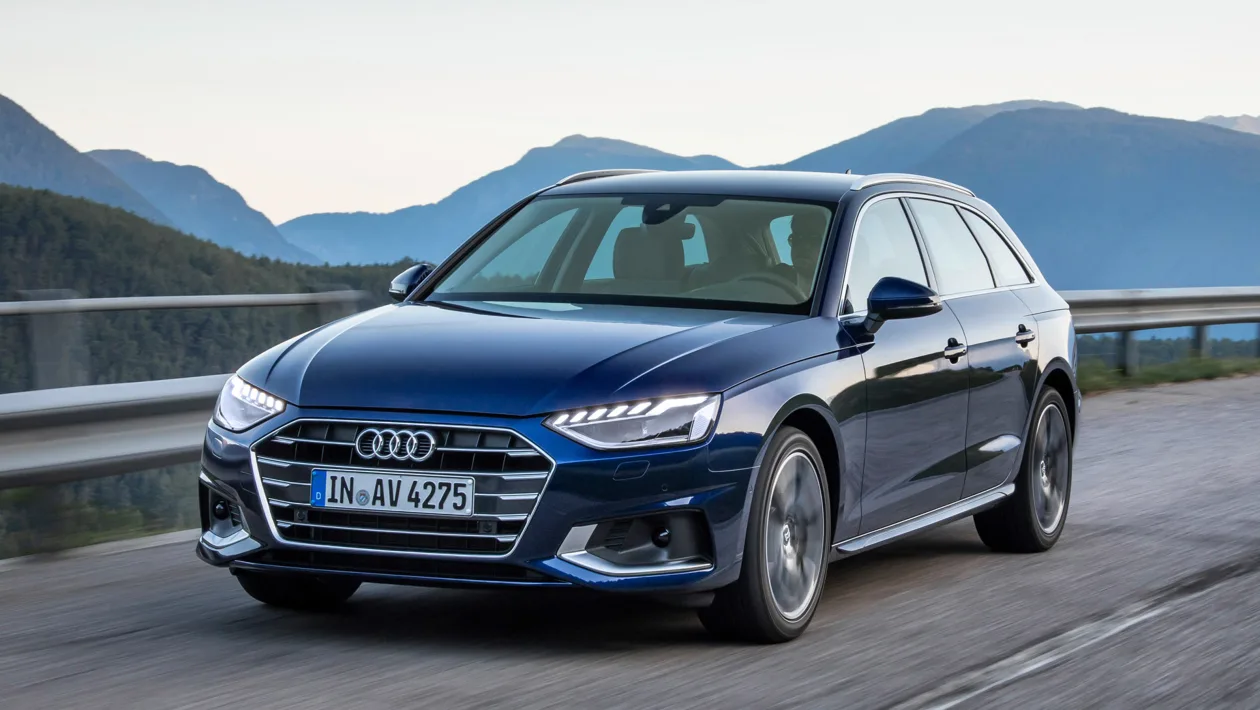
Furthermore, the diesel-powered 2.0 TDI engine achieves “up to 50mpg in real-world use,” ensuring respectable efficiency despite the car’s luxury positioning.
However, operators should be aware of several considerations. The A4’s “higher purchase and maintenance costs” may deter those prioritising upfront affordability.
Audi S-Line models come with firmer suspension setups, which can compromise comfort for rear passengers. Intensive taxi use may also expose vulnerabilities in the car’s electronic systems.
Additionally, the “S Tronic gearbox requires fluid changes at 38,000 miles to avoid expensive repairs,” which can add to the running costs if overlooked.
The boot, at 480 litres, is also smaller than some of its mainstream rivals, which may limit luggage capacity for certain airport runs. Deals for the Audi A4 45 TDI start from £105.
7. Mazda 6 2.2 Skyactiv-D (2012–2022)
The Mazda 6 Tourer provides taxi drivers with a refreshing alternative to more common options like the Skoda Superb and Volkswagen Passat estates.
While the Skoda may have the edge when it comes to outright interior space, the Mazda excels in driving dynamics, long-term dependability, and higher residual values traits that can enhance the overall ownership experience and reduce costs over time.
The Skyactiv-D diesel engines are especially well-regarded, delivering both refinement and “impressive real-world economy,” often returning 55–60mpg in mixed-use scenarios “noticeably better than the equivalent Ford Mondeo Estate.”
Taxi drivers who want to stand out through their vehicle choice, while still enjoying the practicality and efficiency necessary for successful operations, will find the Mazda 6 Tourer a compelling proposition.
It offers “superior reliability,” with consistent top-tier ratings in dependability surveys when compared to its Ford and Volkswagen rivals. Its “excellent diesel efficiency” makes it more economical than similarly sized German competitors.
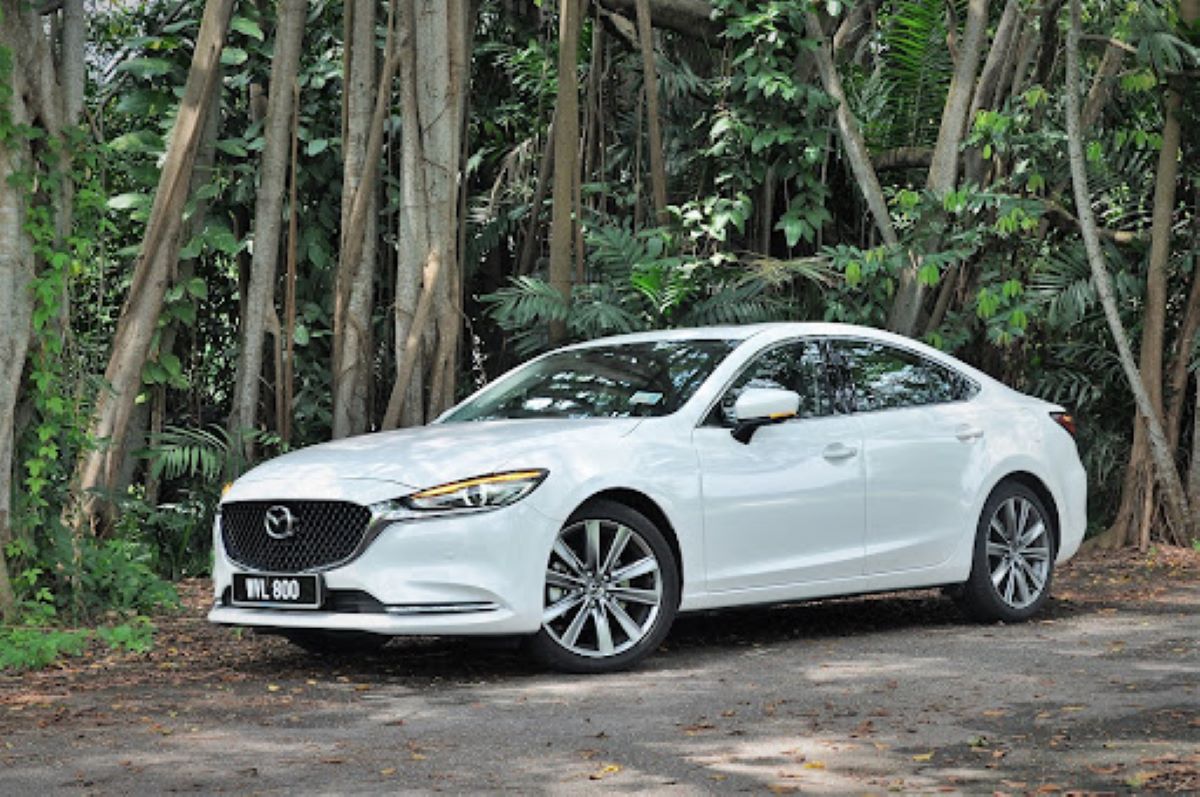
Drivers also benefit from a “more engaging drive” thanks to sharper handling than what is typically found in cars like the Passat or Superb, all without compromising passenger comfort.
Additionally, the car features “intuitive controls” such as physical buttons and a rotary controller, which are easier to manage while driving than touchscreen-heavy systems like those found in VW vehicles.
Despite its strengths, the Mazda 6 Tourer comes with a few trade-offs. Its boot offers 522 litres of space “smaller than the Skoda Superb Estate” with its 660-litre capacity.
The ride can also feel firmer at lower speeds, particularly when fitted with larger wheels, and the car’s dealer network is “slightly narrower” than those of more established rivals like Ford.
Higher-spec Sport models, while stylish, “sacrifice some ride comfort for style with 19-inch wheels.” Additionally, the Mazda is “not as widely recognised as a taxi vehicle compared to Skoda models,” which may influence customer perception in some areas.
8. Volkswagen Passat Estate (2015–2024)
The Volkswagen Passat Estate has firmly positioned itself as a mainstay within private hire fleets across Europe by delivering a well-rounded combination of practicality, refinement, and dependability.
It successfully bridges the gap between the functionality of mainstream models and the polish of premium offerings, making it adaptable to various taxi operations.
With its expansive 650-litre boot “40% larger than a standard saloon” the Passat Estate comfortably handles multiple suitcases, a common requirement for airport transfers, which on average total “approximately 216 journeys annually for the average taxi driver.”
The vehicle’s cabin further enhances its appeal, offering a level of quality that surpasses many of its competitors.
The materials and build quality stand up well to the demands of intensive daily use, which is essential in an industry where private hire cars frequently accumulate “46,500 miles annually.”
Among the standout benefits for taxi operators are its “class-leading boot capacity” of 650 litres, exceeding what is offered by the Mazda 6 Tourer (522L) and Ford Mondeo Estate (525L), and its “superior fuel economy,” with the 2.0 TDI 150PS engine delivering 55–60mpg in real-world mixed driving conditions.
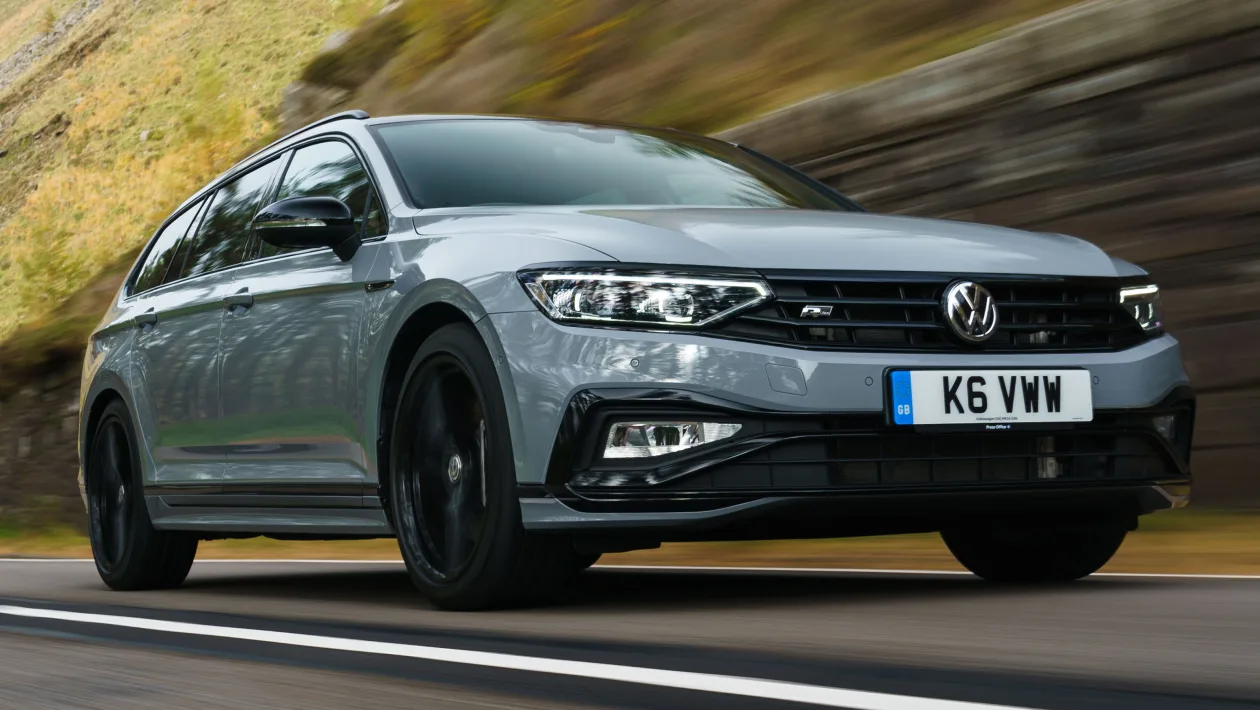
The “premium passenger perception” offered by the VW badge enhances the perceived service level without the added costs associated with true luxury brands.
In addition, the Passat delivers “excellent motorway refinement” with strong wind and road noise suppression that makes for a serene ride experience.
Despite its strengths, there are important factors to consider. The “DSG automatic gearbox requires fluid changes at 40,000 miles to avoid costly repairs,” which may be a maintenance detail easily overlooked by some operators.
Newer models from 2019 onwards are equipped with infotainment systems that use “touch-sensitive controls,” which some drivers find distracting.
Although it shares its platform with the Skoda Octavia, the Passat comes with “component and labor costs” that are higher.
Compared to rivals like the Ford Mondeo Estate or Mazda 6 Tourer, it’s also “less engaging to drive,” and high-mileage versions have been known to present “some electrical system reliability concerns.“ Deals for the Volkswagen Passat Estate start from £104.
9. Tesla Model Y (2022–2025)
The Tesla Model Y has emerged as a prominent choice among taxi drivers transitioning to electric vehicles, particularly within major UK cities. Positioned at the premium end of the EV spectrum, it appeals to eco-conscious executive clientele seeking sustainable yet sophisticated transport solutions.
With its notable range, cutting-edge tech, and distinctive design, the Model Y has carved out a space in the electric taxi landscape.
Compared to competitors like the Kia EV6 or Hyundai Ioniq 5, it offers greater “passenger recognition” and often provides “25–30% greater real-world range,” though it does command a “premium price point of approximately £23,000 for 2022 models with 40,000 miles.”
The Model Y offers several compelling benefits for taxi drivers. It features an “industry-leading range” of 331 miles (Long Range), surpassing the MG5 (250 miles) and Kia EV6 (300 miles).
The “superior charging network” offered by Tesla’s exclusive Supercharger access enables drivers to achieve a 10–80% charge in under 30 minutes ideal for maximising uptime.
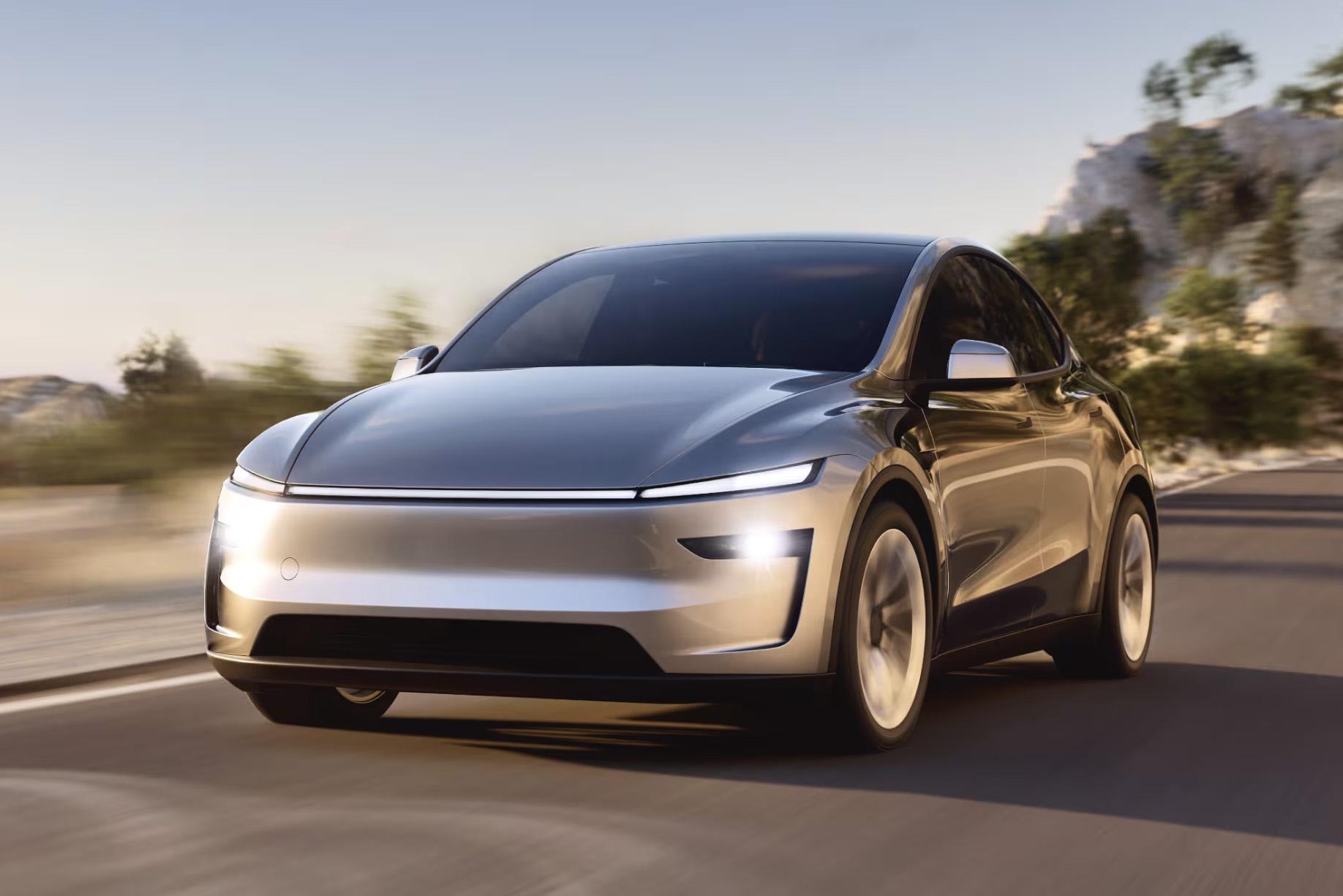
Additionally, its “exceptional cargo capacity” includes an 854-litre boot expandable to 2,041 litres, exceeding what is typically offered by conventional estate cars.
The “premium passenger perception” associated with the Tesla brand helps justify higher fare structures, particularly when appealing to environmentally conscious passengers.
However, prospective buyers should weigh certain limitations. The Model Y requires a “higher initial investment than mainstream electric alternatives like the MG5,” which may deter cost-conscious operators.
Its firm suspension can lead to a ride quality that is less forgiving on rough UK roads. Additionally, “insurance costs are significantly higher (groups 46–50) compared to MG5 (groups 28–29),” and its “touchscreen-only controls” may prove distracting in the context of intensive daily driving.
Finally, the vehicle’s complex electronics have prompted “electronic system reliability concerns” in high-mileage applications that warrant close attention. Deals for the Tesla Model Y begin at £399.
10. Lexus ES300h (2019–2025)
The Lexus ES300h is an increasingly popular choice among premium taxi services, combining “Toyota’s proven hybrid technology” with a refined, executive-level ride experience.
As it becomes more common within upscale fleets, the ES300h serves clients who prioritise comfort and quality, while also offering peace of mind due to Lexus’s stellar dependability record.
The vehicle’s “self-charging hybrid system fundamentally the same technology proven in millions of Prius taxis worldwide” enables efficient operation with “quoted figures of over 50mpg in mixed driving.”
A standout feature is Lexus’s unparalleled reliability, as the brand ranked “first among 32 manufacturers in the What Car? Reliability Survey.”For taxi operators, this translates into long-term confidence, particularly in high-mileage usage.
Compared with traditional European luxury sedans like the Mercedes E-Class and BMW 5 Series, the ES300h “typically costs 15–20% less to maintain over a three-year period” while still offering “comparable interior space and comfort.”
Other key advantages include an “exceptional reliability” record, a “genuinely luxurious interior with limousine-like rear legroom,” and “impressive efficiency” with real-world figures of 40–45mpg even in intensive taxi use.
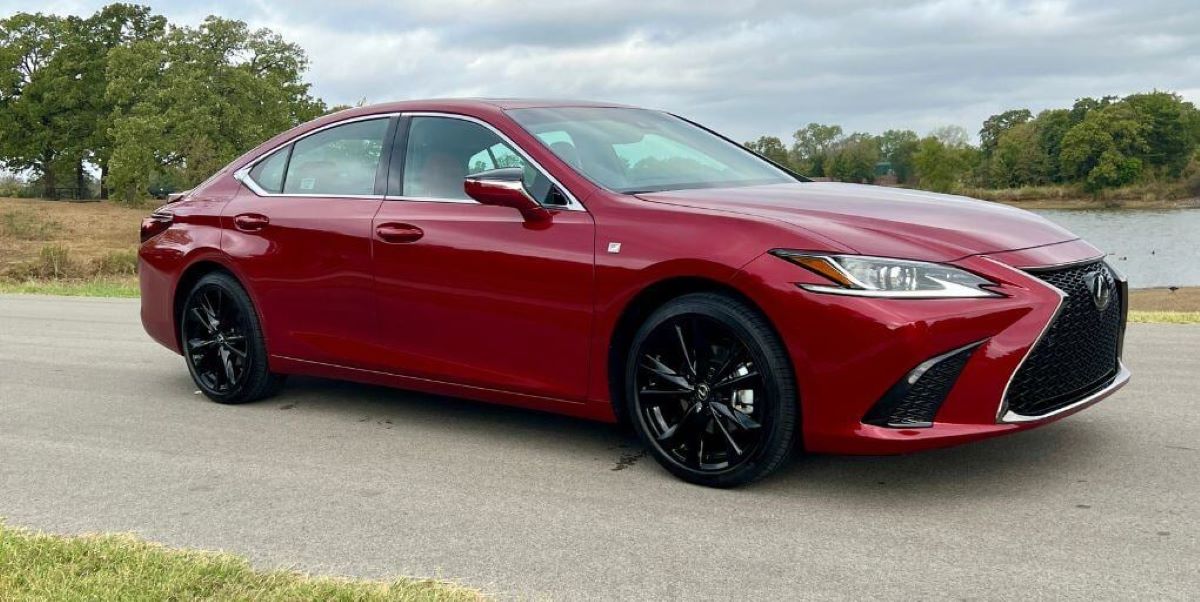
Maintenance costs are lower as well, thanks to “significantly reduced servicing requirements compared to complex German alternatives.”
Nevertheless, there are a few trade-offs. The ES300h lacks the outright speed of its German counterparts, with a “0–62mph in 8.9 seconds” time that may disappoint some.
The “CVT transmission causes engine drone when accelerating hard,” which can detract from the otherwise serene ride. The boot offers “limited capacity at 454 litres versus 540+ litres in 5 Series or E-Class,” and the “rear seats don’t fold down,” reducing flexibility for carrying large items.
Additionally, the touchscreen interface is considered “less intuitive than BMW’s rotary controller system.”
Despite these drawbacks, the ES300h remains a highly compelling option for drivers seeking reliable, refined hybrid motoring for the premium market.

